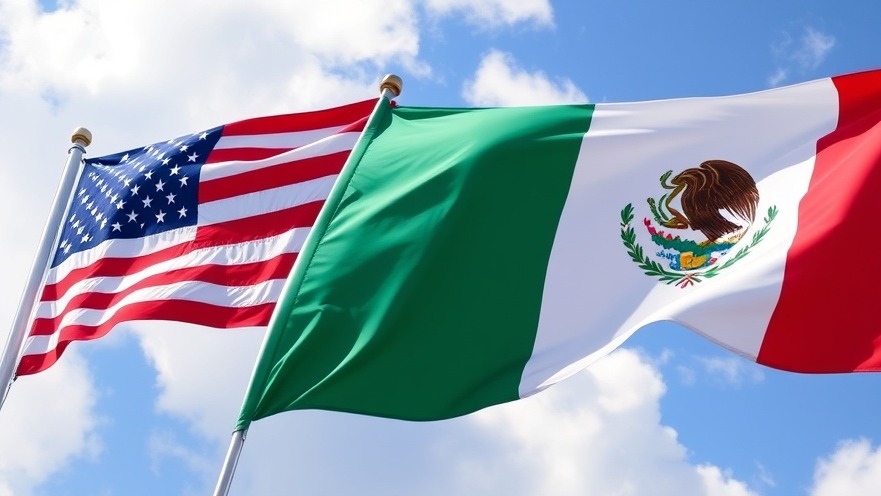
The Impending Tariff Storm: What Texas Needs to Know
As of August 1, 2025, Texas may find itself in turbulent economic waters due to an increase in tariffs on Mexican goods. A significant portion of trade between Texas and Mexico, which has largely been shielded from tariffs for months, could soon be affected. This shift comes as President Trump, following a letter to Mexican President Claudia Sheinbaum Pardo, threatens an increase of tariffs from 25% to 30% unless rapid negotiations for new trade agreements take place.
The Economic Relationship Between Texas and Mexico
Texas has long relied on Mexico as its largest trading partner. In 2024, two-way trade between the United States and Mexico reached a staggering $840 billion, with Texas accounting for $281 billion of that total. The close relationship has been especially prominent in the agriculture sector, where the Texas International Produce Association, representing about 400 companies, reported a collective annual trade of $13 billion in produce. This interconnectedness means that changes in tariff policies can resonate widely through Texas agriculture, impacting everything from prices to supply chains.
Potential Economic Ramifications
With the potential for a significant tariff spike, many economists fear that Texas's economy could face renewed challenges. Dante Galeazzi, President of the Texas International Produce Association, remarked, “When we talk about the possibility of a 30% tariff, that is a game changer.” Unlike previous fluctuations in tariff rates, which would often be swiftly amended, the upcoming changes hold the potential to be enduring, amplifying existing tensions and stresses within the local economy.
Lessons From the Trade War
Reflecting on past incidents, Texas importers and exporters have already been through a “dress rehearsal.” Craig Slate of SunFed noted the intensity of preparations ahead of previous tariff discussions. The emotional and logistical turbulence created by uncertainty in tariff policies can leave businesses scrambling to re-evaluate their operations. This time, however, the warning signs are clearer, though the consequences could still be severe.
Historical Context: The Tug-of-War Over Trade
The backdrop of this situation is the broader framework of the United States-Mexico-Canada Agreement (USMCA). Designed to foster smoother trade relations, the USMCA facilitated reduced barriers and created a more balanced playing field. However, as Trump’s policies shift, so too does the landscape of this trade agreement. Understanding these historical tensions provides context to today’s volatile trade landscape, underscoring the importance of stability in such agreements.
Future Predictions: What Lies Ahead for Texas?
Looking forward, many analysts predict an increasingly complex trade environment. As tariffs escalate, businesses will likely face higher operational costs, which could translate into heightened prices for consumers. This situation raises important questions for consumers and producers alike about how to navigate a potential slowdown in trade and the economic implications that come with it.
Conclusion: A Call to Stay Informed
With the tariff situation looming large, it's crucial for Texans to remain informed about how these political currents may affect their daily lives. From fluctuating prices on essentials to adjustments in supply chains, the reverberations of these tariff increases could be significant. By staying updated and proactive, Texans can better adapt to these changes and engage in the necessary discussions about the state's economic future.
 Add Element
Add Element  Add Row
Add Row 



Write A Comment